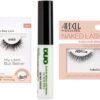
Although rare, there are instances of adverse skin reactions to DHA. The Journal of the Dermatology Nurses’ Association reports cases of rashes, cough, dizziness, and fainting linked to spray tans containing DHA. Additionally, sunless tanners can trigger contact dermatitis.
“Any number of topical products, including sunless tanners, may contain active and inactive ingredients that can provoke an irritant or allergic contact dermatitis, so it is important to first test any new product before applying it more broadly,” Jeremy Brauer, a New York City-based board-certified dermatologist, tells Allure.
To perform a patch test for self-tanning products, apply a small amount of the tanner on an area of skin that won’t easily be washed away and wait 24 hours. If no reaction occurs within this period, the product can be safely used. However, if any skin irritation or reaction occurs, discontinue use immediately. For those with sensitive skin who want a professional spray tan, it’s best to seek a hypoallergenic solution without fragrances.
This post was originally published on this site be sure to check out more of their content.









